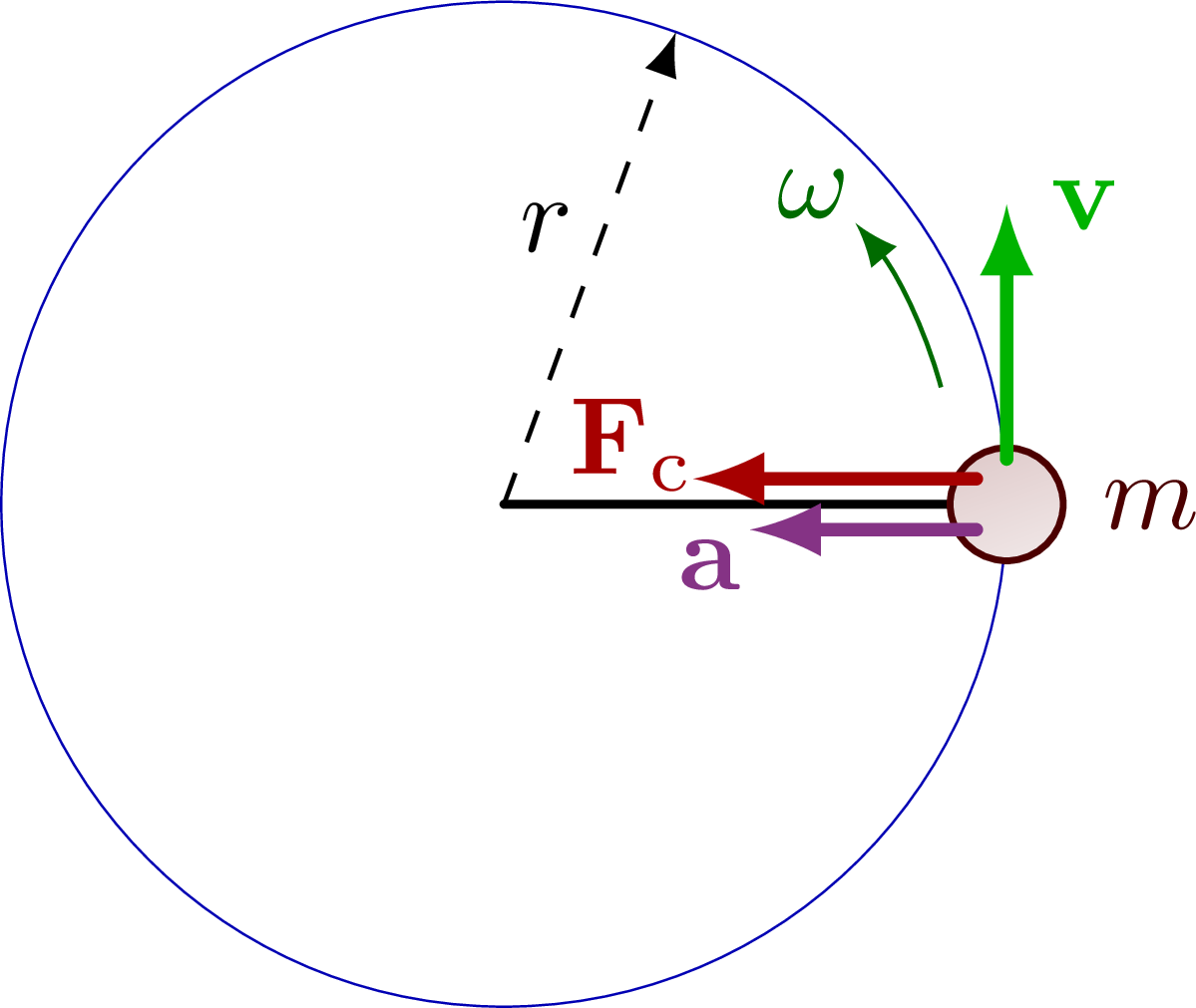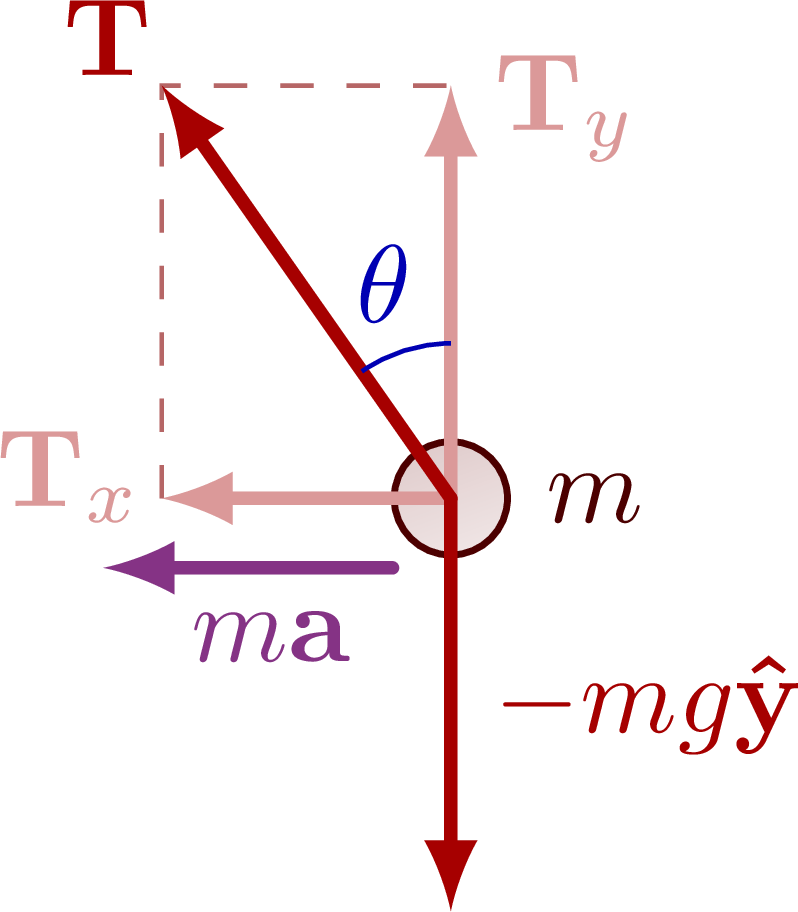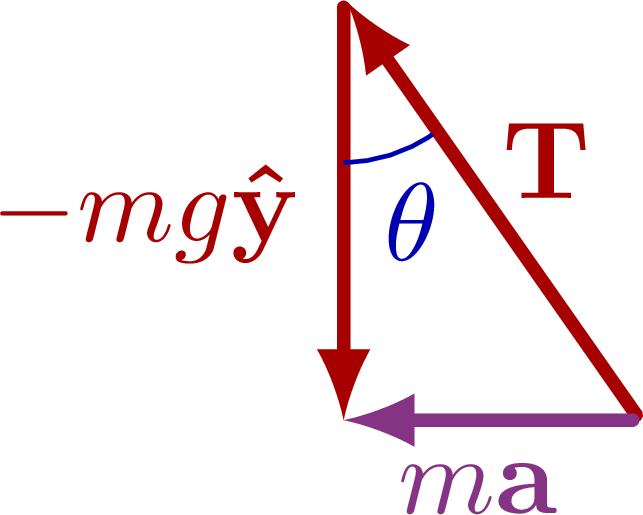The basics of the centripetal force in uniform circular motion, including a mass suspended from a string.
More on uniform circular motion here. For more related figures, please see the “forces” and “Newton’s laws” tag.
Edit and compile if you like:
% Author: Izaak Neutelings (October 2020)% Inspiration: https://tex.stackexchange.com/questions/25531/adding-underbrace-in-tikz\documentclass[border=3pt,tikz]{standalone}\usepackage{physics}\usepackage{siunitx}\usepackage{ifthen}\usepackage{tikz}%\usepackage[outline]{contour} % glow around text\usetikzlibrary{calc}\usetikzlibrary{angles,quotes} % for pic\usetikzlibrary{patterns}\tikzset{>=latex} % for LaTeX arrow head%\contourlength{1.4pt}\colorlet{xcol}{blue!70!black}\colorlet{vcol}{green!70!black}\colorlet{myred}{red!65!black}\colorlet{acol}{red!50!blue!80!black!80}\tikzstyle{ground}=[preaction={fill,top color=black!10,bottom color=black!5,shading angle=20},fill,pattern=north east lines,draw=none,minimum width=0.3,minimum height=0.6]\tikzstyle{metal}=[fill,top color=black!40,bottom color=black!20,shading angle=10]\tikzstyle{mass}=[line width=0.6,red!30!black,fill=red!40!black!10,rounded corners=1,top color=red!40!black!20,bottom color=red!40!black!10,shading angle=20]\tikzstyle{rope}=[brown!70!black,very thick,line cap=round]\def\rope#1{ \draw[black,line width=1.5] #1; \draw[rope] #1; }% FORCES SWITCH\tikzstyle{force}=[->,myred,very thick,line cap=round]\tikzstyle{Fproj}=[force,myred!40]\newcommand{\vbF}{\vb{F}}\newcommand{\vbT}{\vb{T}}\begin{document}% CIRCULAR MOTION - 2D\begin{tikzpicture}\def\R{1.6} % string length\def\r{0.18} % ball radius\def\Ry{0.5} % small radius of the ellipse\def\F{0.9} % force size
Click to download: dynamics_circle.tex • dynamics_circle.pdf
Open in Overleaf: dynamics_circle.tex





